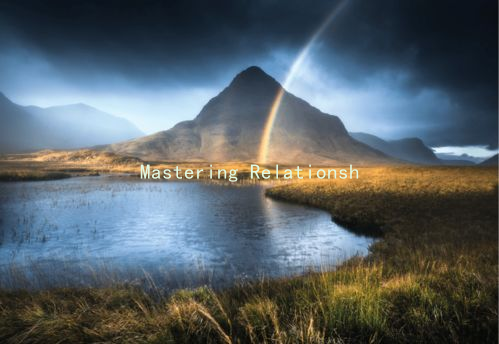Mastering Relationship Dynamics: The Impact of Emotions vs. Feelings in Communication
Mastering Relationship Dynamics: The Impact of Emotions vs. Feelings in Communication
In the intricate dance of relationships, communication remains a vital cornerstone. Understanding the nuances between emotions and feelings can illuminate the path to more profound connections, enhancing our interactions and strengthening our bonds. While often used interchangeably in casual conversations, emotions and feelings represent distinct concepts that play a crucial role in our relationships.
Emotions are the instinctive responses to stimuli, often triggered by external events or circumstances. They are universal and biologically hardwired, manifesting as quick, automatic reactions. For example, you may feel joy upon receiving a compliment, or anger when faced with betrayal. Emotions are visceral and tend to arise without conscious thought, enveloping us in their intensity. In the realm of relationships, these raw reactions can significantly impact communication. When we experience strong emotions, our ability to convey our thoughts effectively may be compromised. We might lash out in anger or retreat in sadness, potentially leading to misunderstandings or conflict.
Feelings, on the other hand, are the cognitive interpretations of our emotions. They require awareness and often evolve over time as we reflect on our emotional experiences. For instance, if someone makes you angry, you might later evaluate that anger and recognize underlying feelings of hurt or disappointment. This distinction is critical in relationship dynamics; while emotions can lead to spontaneous reactions, feelings enable us to articulate our experiences and engage in meaningful dialogues.
Recognizing the difference between emotions and feelings empowers us to navigate conversations more adeptly. Here are several techniques to harness this understanding in communication:
1. Pause and Reflect: When confronted with a strong emotion, take a moment to pause before reacting. Ask yourself what you are feeling and why. This reflection can prevent impulsive responses that may escalate a situation.

2. Identify and Label Emotions: Practice naming your emotions. Are you feeling anxious, joyful, upset, or confused? By labeling your emotions, you gain clarity and can communicate them more effectively to your partner.
3. Express Feelings Constructively: Rather than simply reacting to emotions, use “I” statements to express your feelings. For instance, say, “I feel hurt when you don’t call,” rather than “You never call me.” This shifts the focus from blame to your perspective and fosters a more open dialogue.
4. Encourage Open Communication: Create a safe space for your partner to express their emotions and feelings. Encourage them to share what they are experiencing without fear of judgment. This vulnerability can enhance intimacy and trust.
5. Practice Active Listening: When your partner shares their emotions, listen actively and empathetically. Rather than planning your response, focus entirely on understanding their experience. Ask clarifying questions to show your investment in their feelings.
6. Check-in Regularly: Make it a habit to check in with each other about your emotional states. Regularly discussing how you both feel can prevent misunderstandings and ensure both partners feel heard and valued.
In conclusion, mastering the dynamics of emotions and feelings is essential for effective communication in relationships. By acknowledging the interplay between these two elements, we can foster healthier interactions and build stronger connections. As we strive to articulate our emotional experiences and cultivate a deeper understanding of our partner’s feelings, we pave the way for more honest and meaningful relationships. Embracing this knowledge equips us with the tools to navigate the complexities of love and partnership, ultimately leading to a more enriching and fulfilling relationship journey.





